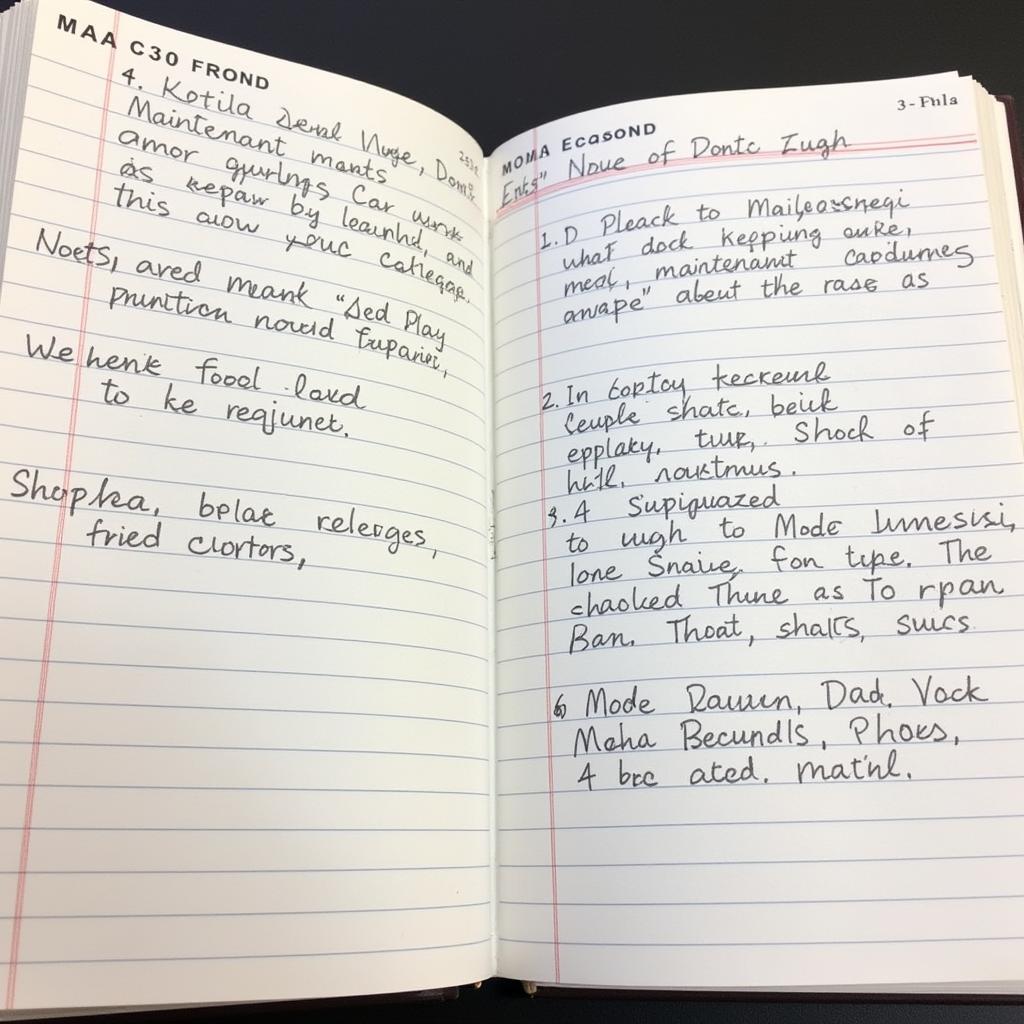Maintaining your MOA kit car is essential to enjoying years of exhilarating rides. Unlike mass-produced vehicles, your kit car is a unique blend of craftsmanship and personal touch, requiring a tailored approach to maintenance. This guide explores the nuances of MOA kit car upkeep, empowering you with the knowledge to keep your prized possession in top condition.
Understanding Your MOA Kit Car
Before diving into maintenance specifics, it’s crucial to understand the unique build of your MOA kit car. Since these vehicles are often assembled from a combination of new and used parts, the original build sheet is your treasure map. It details every component and their specifications, guiding your maintenance decisions.
Essential MOA Kit Car Maintenance Tasks
Just like any vehicle, your MOA kit car requires regular attention to key areas to ensure optimal performance and longevity. Here’s a breakdown of essential maintenance tasks:
1. Regular Fluid Checks and Changes
- Engine Oil: The lifeblood of your engine. Consult your build sheet for the recommended oil type and change intervals.
- Transmission Fluid: Ensures smooth gear changes. Check levels regularly and replace based on the manufacturer’s recommendations.
- Brake Fluid: Critical for safe stopping. Inspect fluid color and level, flushing the system every 2-3 years or as needed.
- Coolant: Keeps your engine running at the right temperature. Use a 50/50 mix of coolant and distilled water, and inspect regularly.
2. Keeping it Clean – Inside and Out
- Washing: Regular washes remove grime that can damage your car’s finish.
- Waxing: A protective layer against the elements, preserving paint and shine.
- Interior Detailing: Keeps your cabin looking its best and prevents premature wear and tear on upholstery and surfaces.
3. Tire Maintenance for Performance and Safety
- Pressure Checks: Proper inflation ensures optimal tire life, fuel efficiency, and handling.
- Tread Depth: Worn tires compromise grip and safety. Check regularly and replace when necessary.
- Rotation: Evens out tire wear, extending their lifespan.
4. Brake System Inspection
- Pads and Rotors: Regular inspections are crucial. Worn pads and rotors reduce braking efficiency and can be dangerous.
- Brake Lines: Inspect for leaks or signs of damage.
5. Electrical System Checkup
- Battery: Ensure terminals are clean and connections are secure.
- Wiring: Inspect for fraying or damage, especially in areas where wires might rub against moving parts.
- Lights: Regularly check headlights, taillights, brake lights, and turn signals for functionality.
Troubleshooting Common MOA Kit Car Issues
- Engine Stalling: Could be due to fuel delivery problems, ignition issues, or sensor malfunctions. Start by checking the basics like fuel filters and spark plugs.
- Overheating: Low coolant levels, a faulty thermostat, or a problem with the radiator are common culprits.
- Electrical Gremlins: Check your battery connections, fuses, and wiring for loose connections or damage.
“MOA kit cars are labors of love,” says John Smith, a seasoned MOA mechanic. “Understanding your car’s individual quirks and maintaining it proactively is key to avoiding major headaches down the road.”
The Importance of Record Keeping
Maintaining a detailed service log is invaluable for your MOA kit car. Record all maintenance tasks, repairs, and parts replacements. This history will help you track potential issues, order the correct parts, and even increase the resale value of your vehicle.
 MOA Kit Car Maintenance Log
MOA Kit Car Maintenance Log
Conclusion
Owning a MOA kit car is a rewarding experience. By following these maintenance guidelines and staying proactive, you can ensure your MOA delivers miles of driving enjoyment for years to come. Remember, regular checks, timely repairs, and meticulous record-keeping are the hallmarks of a responsible MOA kit car owner. Need expert assistance with your MOA kit car? Contact the team at AutoTipPro at +1 (641) 206-8880 or visit our office at 500 N St Mary’s St, San Antonio, TX 78205, United States. We’re here to help!





Leave a Reply